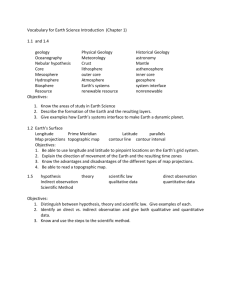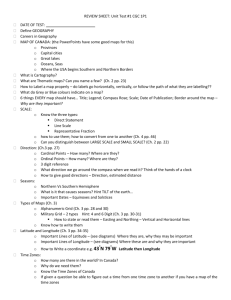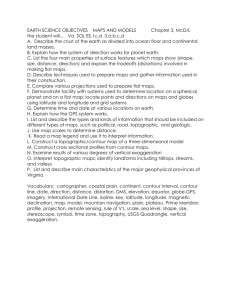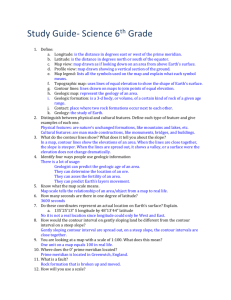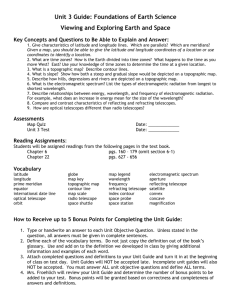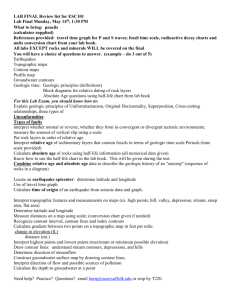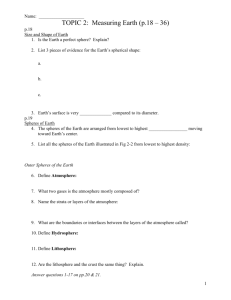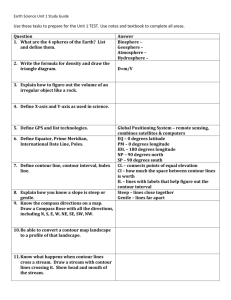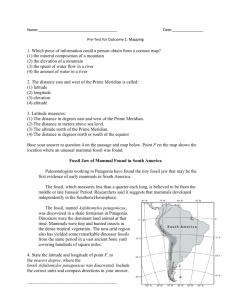10. How can GPS technology be used in mapmaking?
advertisement
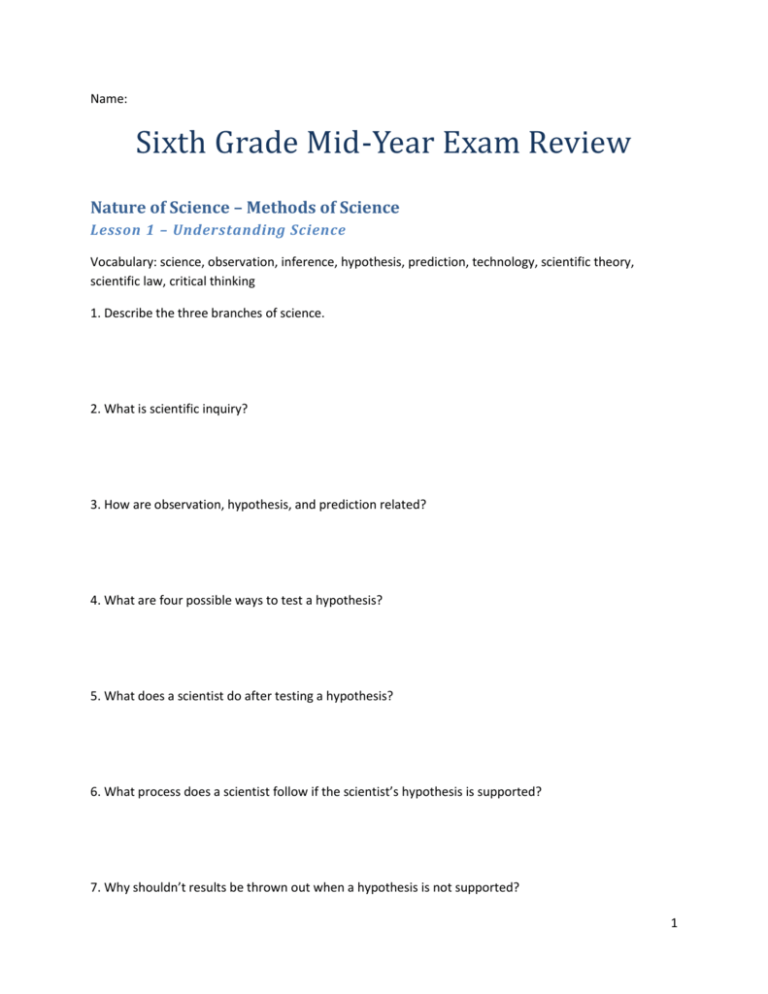
Name: Sixth Grade Mid-Year Exam Review Nature of Science – Methods of Science Lesson 1 – Understanding Science Vocabulary: science, observation, inference, hypothesis, prediction, technology, scientific theory, scientific law, critical thinking 1. Describe the three branches of science. 2. What is scientific inquiry? 3. How are observation, hypothesis, and prediction related? 4. What are four possible ways to test a hypothesis? 5. What does a scientist do after testing a hypothesis? 6. What process does a scientist follow if the scientist’s hypothesis is supported? 7. Why shouldn’t results be thrown out when a hypothesis is not supported? 1 8. How is technology related to scientific knowledge? 9. How do scientific laws and scientific theories differ? 10. How do a fact and opinion differ? 11. What is critical thinking? Why is it important? Lesson 2 – Measurement and Scientific Tools Vocabulary: description, explanation, International System of Units (SI), significant digits 1. Compare description and explanation. 2. What is the International System of Units (SI)? Why is it important for scientists to use the International System of Units (SI)? 3. What are the SI base units for length, mass, and time? 4. Why does SI use prefixes with its base units? 2 5. What causes measurement uncertainty? 6. What would the length of a paper clip be if you rounded it from 4.462 cm to two significant digits? 7. What four values do scientists often use to compare data they collected? Describe how to determine each value. 8. Identify the quantity measured by and unit for each tool: metric ruler meterstick glassware: graduated cylinder, beaker triple-beam balance – thermometer compass – wind vane – anemometer – streak plate (no unit)- Lesson 3 – Case Study Vocabulary: variable, independent variable, dependent variable 1. What are the two types of variables in a controlled experiment, and how do they relate to each other? 3 2. An investigator tests the effect of temperature on the rate that a body decays. What are the independent and dependent variables in the experiment? 3. Compare a control group and an experimental group. 4. What is error analysis? Why is it important? 5. What is an inference? Chapter 1 – Mapping Earth Lesson 1 – Maps Vocabulary – map view, profile view, map legend, map scale, longitude, latitude, time zone, International Date Line 1. Compare map view and profile view. 2. What is the purpose of a map legend? 3. What is a map scale? In what ways can a map scale be communicated? 4. What relationship do lines of longitude and lines of latitude have? 4 5. How do latitude and longitude describe a location on Earth? 6. What do we call the center line of longitude that runs from the North Pole to the South Pole through Greenwich, England? What is the opposite meridian? These two meridians combine to separate the earth into the eastern and western hemispheres. 7. What do we call the center line of latitude that separates the earth into the northern and southern hemispheres? 8. What happens to the lines of latitude as you move toward the poles? Why? 9. Earth is a sphere that measures ___________ degrees. 10. What is the starting point for the time zones? Why do we need a starting point for time zones? 11. How many time zones are on Earth? 12. If it is 2:00 p.m. in New York City, what time is it in Los Angeles, California? 5 13. What is the International Date Line? 14. How does crossing the International Date Line affect travelers’ schedules? 15. Where are maps made from cylindrical projects most accurate? Where are maps made from conical projections most accurate? What are the disadvantages of each type of projection? Lesson 2 – Technology and Mapmaking Vocabulary: topographic map, elevation, relief, contour line, contour interval, slope, geologic map, cross section, remote sensing 1. What does a topographic map show? 2. What is the difference between elevation and relief? 3. Why don’t contour lines cross over each other? 4. What is the difference between an index contour line and a contour interval? 5. What can you learn about the features at Earth’s surface from studying contour lines? 6 6. Why is it important for a topographic map to have a legend? 7. What three things are shown on most geologic maps? 8. How is color used in a geologic map? 9. What does GPS stand for? 10. How can GPS technology be used in mapmaking? 11. What does GIS stand for? 12. What type of data might be contained in GIS databases? 13. How do scientists and mapmakers obtain remote sensing data? 14. How can remote sensing be an advantage to mapmakers? 7 15. What types of data are collected by Landsat instruments? 16. How is Landsat data different from the data collected by TOPEX and Jason-1? Big Idea 4 – Earth is divided into layers: crust, mantle, and core. The crust is made up of plates that move slowly around Earth’s surface. Why do the continents look like they fit together? Vocabulary: cartographer, geologist, hypothesize, magma, mechanism, rift, trench How do scientists know what is inside Earth? Vocabulary: density, composition, seismic waves, mantle, asthenosphere, lithosphere 8
